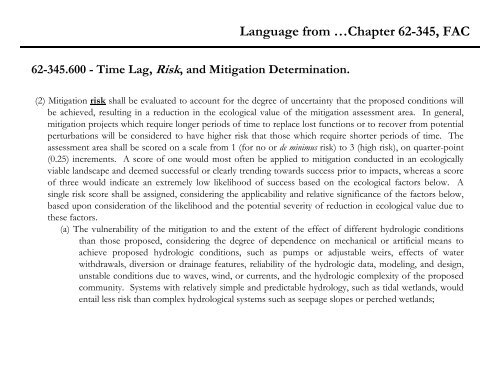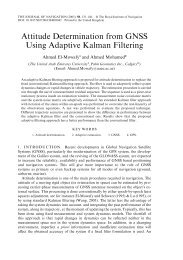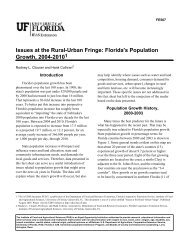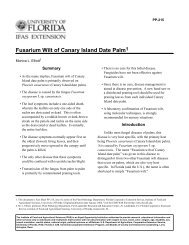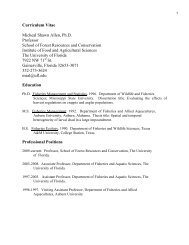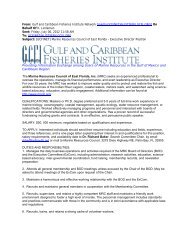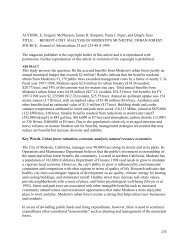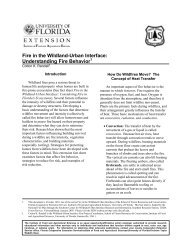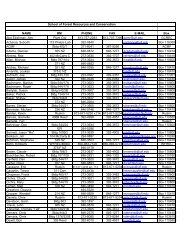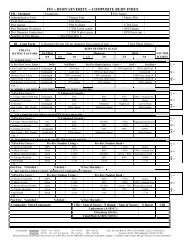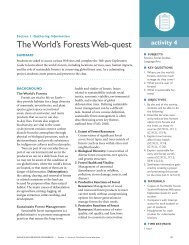Uniform Mitigation Assessment Method TRAINING MANUAL
Uniform Mitigation Assessment Method TRAINING MANUAL
Uniform Mitigation Assessment Method TRAINING MANUAL
Create successful ePaper yourself
Turn your PDF publications into a flip-book with our unique Google optimized e-Paper software.
Language from …Chapter 62-345, FAC<br />
62-345.600 - Time Lag, Risk, and <strong>Mitigation</strong> Determination.<br />
(2) <strong>Mitigation</strong> risk shall be evaluated to account for the degree of uncertainty that the proposed conditions will<br />
be achieved, resulting in a reduction in the ecological value of the mitigation assessment area. In general,<br />
mitigation projects which require longer periods of time to replace lost functions or to recover from potential<br />
perturbations will be considered to have higher risk that those which require shorter periods of time. The<br />
assessment area shall be scored on a scale from 1 (for no or de minimus risk) to 3 (high risk), on quarter-point<br />
(0.25) increments. A score of one would most often be applied to mitigation conducted in an ecologically<br />
viable landscape and deemed successful or clearly trending towards success prior to impacts, whereas a score<br />
of three would indicate an extremely low likelihood of success based on the ecological factors below. A<br />
single risk score shall be assigned, considering the applicability and relative significance of the factors below,<br />
based upon consideration of the likelihood and the potential severity of reduction in ecological value due to<br />
these factors.<br />
(a) The vulnerability of the mitigation to and the extent of the effect of different hydrologic conditions<br />
than those proposed, considering the degree of dependence on mechanical or artificial means to<br />
achieve proposed hydrologic conditions, such as pumps or adjustable weirs, effects of water<br />
withdrawals, diversion or drainage features, reliability of the hydrologic data, modeling, and design,<br />
unstable conditions due to waves, wind, or currents, and the hydrologic complexity of the proposed<br />
community. Systems with relatively simple and predictable hydrology, such as tidal wetlands, would<br />
entail less risk than complex hydrological systems such as seepage slopes or perched wetlands;


